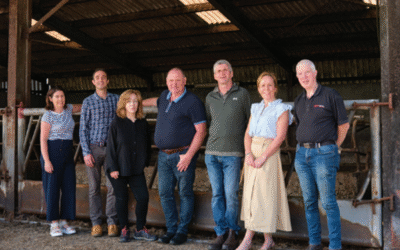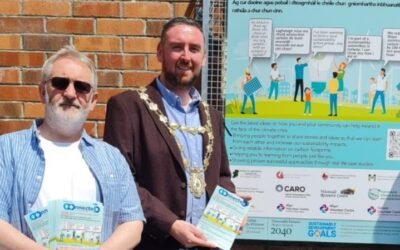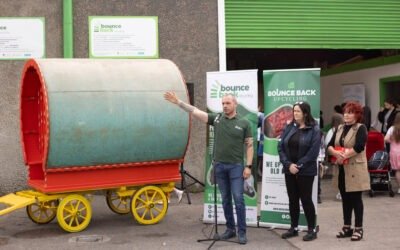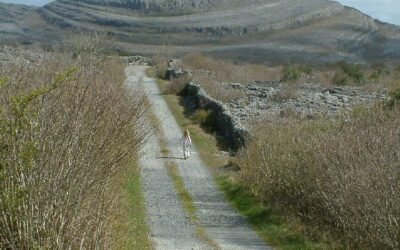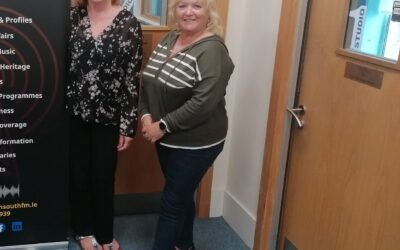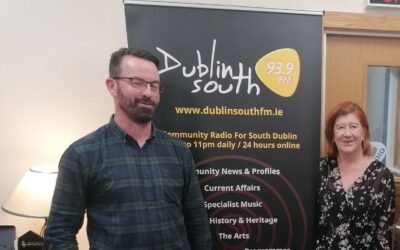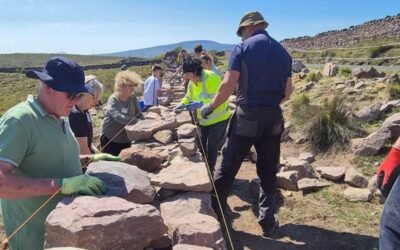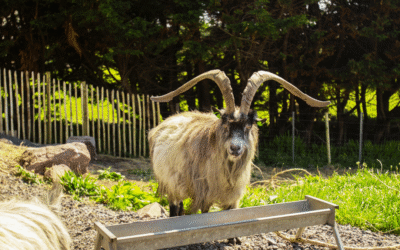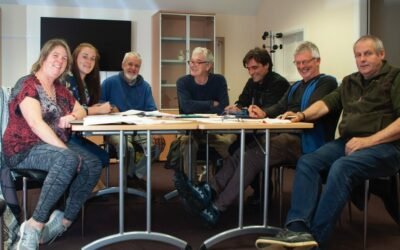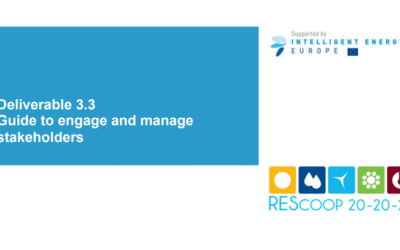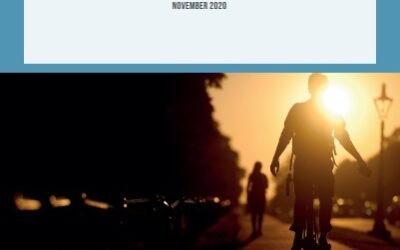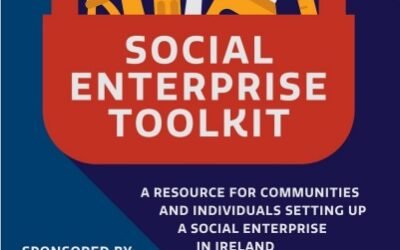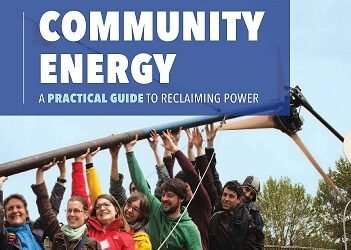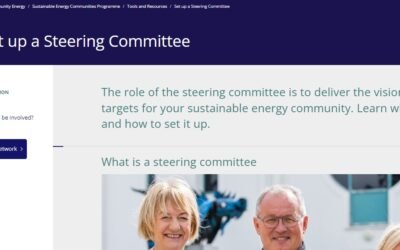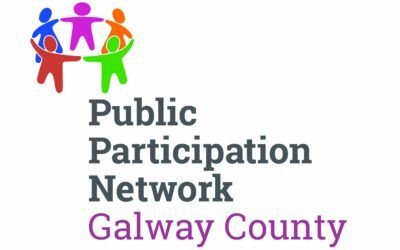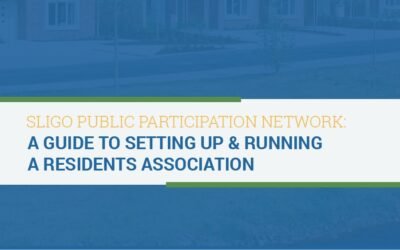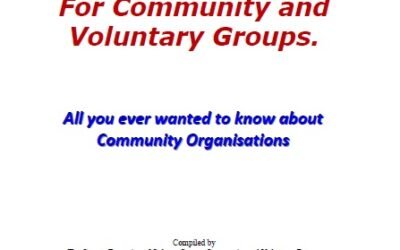Governance: How should we set up and run our community group?

Building a firm foundation for your group will mean that you will grow strongly. These resources will tell you about how to best set up a community group choosing the system that works best for you. Our tool was devised by University of Galway working with three decarbonisation zone(DZ) a group that is working to reduce the carbon emissions of the community. It is officially recognised by its county or city council which supports it's work groups in Galway, Sligo and Mayo.
West Kerry Dairy Farmers Sustainable Energy Community
West Kerry Dairy Farmers set up a Sustainable Energy Community (SEC) in 2020 to cut electricity use and carbon emissions in the dairy sector in the area. Led by local farmer Dinny Galvin, supported by a small steering committee, Dingle Hub, and SEAI mentors, the group co-created an Energy Master Plan (EMP) with outside consultants. They went on to run a collective solar PV meitheal . The SEC combined a collective tender for solar, and farmer-to-farmer learning to move farms toward energy efficiency and visible climate action.
West Side Resource Centre – a supportive, local ecosystem. Podcast with James Coyne
The Westside Resource Centre is a hub for the community where people can find resources and make connections to help kickstart their sustainability actions – there are resource centres and community hubs throughout Ireland: find yours and start your own action. In our latest podcast, Maeve from the Climate Connected series speaks with James Coyne, the CEO of the Galway Westside Resource Centre, about how his community-focused organisation is tackling climate and environmental issues from the ground up.
Bounce Back Recycling: a lesson from Ireland’s ‘original recyclers’
Bounce Back Recycling (BBR) is a Traveller-led social enterprise that breaks down mattresses and bulky furniture by hand so their materials can be reused or recycled instead of having to be landfilled or incinerated. It brings together environmental aims (shifting bulky waste into the circular economy) with social goals (training and employing people from the Traveller community).
Burrenbeo Trust
Set up as a charity in 2008, Burrenbeo Trust is a non-profit organisation that connects all of us to our places and our role in caring for them. Based in the Burren, Burrenbeo Trust works to raise awareness of the importance of the Burren, and to encourage local communities to act as carers of its priceless heritage. Building on lessons learned over the past twenty years, Burrenbeo also supports ‘place-based learning’ across Ireland as a way that communities can learn more about their place and their role in actively caring for it.
Mulranny: Use what’s in your community to develop it sustainably
Maeve interviews Carol Loftus, of the Sustainable Energy Community in Mulranny, Mayo. The discussion highlights the journey of Mulranny from a fading tourist spot to a thriving model of community-driven sustainable development. Carol outlines how projects emerged, how local people were mobilised, how outside expertise and funding were drawn in, and how sustainability has been woven into tourism, energy, and heritage initiatives.
Mulranny Community Futures with Seán Carolan
Sean Carolan from Mulranny Community Futures talks to Maeve Halpin in our Podcast Number 3. The Mulranny story demonstrates that transformative climate and community action is possible through a structured model of deep community engagement, respectful collaboration, and strategic coordination. It proves that when citizens are genuinely empowered to design their own future, they generate innovative, locally-suited solutions that also contribute to global sustainability goals.
Stone Wall Festival — Rebuilding heritage the regenerative way
What started as a small, hands‑on community weekend became an example of regenerative tourism (where vistors make a place better while they visit it): visitors learn a traditional craft, rebuild a section of wall, and leave a visible legacy on the Great Western Greenway.
Working with Nature: The Rosmurrevagh Dunes Conservation Project
The Rosmurrevagh Dunes Project is a very strong example of community-led ecological restoration based in observation, care, and long-term commitment. Started by local farmers in 1996, the project began as an answer to bad erosion and . Over time, it became a leading example of learning together and how to protect the land from the sea using natural ways and not just building walls. Today, Rosmurrevagh is known as one of Ireland’s strongest sand dune systems. This was not just against erosion from the sea, but because the community learned to work with nature.
Old Irish Goat Project – Reviving Heritage for a Resilient Future
What started as a search for a lost native breed has grown into one of Ireland’s most innovative examples of community-led climate action. In Mulranny, County Mayo, a local group came together to protect the Old Irish Goat — a rare and ancient animal deeply connected to Irish culture. Today, their work blends conservation, education, and land management in ways that support both biodiversity and climate resilience.
Aran Islands’ Energy Co-operative
A community owned energy cooperative representing the 3 Aran Islands. Lifetime membership is open to everyone who lives on the Islands for a fee of just €100. The cooperative is non-profit with all of the benefits going back into the community. The co-op shows how ordinary citizens can have big impacts on their community – but set things up right on a firm base.
REScoop Action Guide for Stakeholder Engagement
This guide provides practical advice on how to engage citizens and stakeholders in renewable energy cooperative (REScoop) projects. It covers a wide range of topics, including: How to get started with a REScoop project. How to organize and manage a REScoop. How to finance a REScoop project. How to involve citizens in the production, consumption, and governance of REScoop projects, How to promote cooperation between REScoops
Social Enterprises In Ireland: Legal Structures Guide
This guide gives the reader lots of information on the legal structures available for social enterprises in Ireland. It includes general information, advantages and disadvantages of each legal structure, and case studies of social enterprises that have adopted different types of legal structures. The document also talks about what you should think about when choosing a suitable legal structure. These include where you may expect to get money supports from and the needs of stakeholders.
Social Enterprise Toolkit
A toolkit for social enterprises, including various exercises, strategies, and advice to help organizations succeed. It covers topics such as...
Community Energy: A Practical Guide to Reclaiming Power
A full guide all about community energy. It covers everything you need to build a core team, [tooltip text="how people get on with eachother in...
Tools for helping with Committee Setup (from SEAI SEC Programme)
This is a gateway or starting point into many resources offered by the SEAI. These are aimed at helping sustainable energy communities grom. It...
Collection of Resources for Community Groups (from Galway PPN)
A very large collection of resources, and guidelines specially made for community groups. It talks about topics from national policies and legal...
A Guide to Setting Up and Running a Residents Association
While this booklet is a detailed guide about how to set up a Residents Association, and how to manage it once you've set it up, its lessons are...
Setting Up a New Community Organization
Get thorough guidance on how to set up a voluntary or community organization. This document covers important topics like how to identify your...
Best Practice For Community Groups Guide
A comprehensive guide on best practices, strategies, and guidelines for community and voluntary groups. This guide covers essential topics such...
Board Roles Relationships and Boundaries
This is a presentation, providing an overview of board roles, relationships, and boundaries within the context of Galway Volunteer Centre. It...

